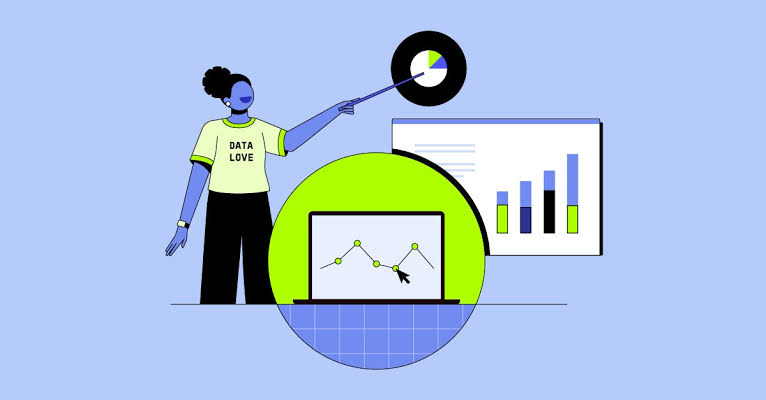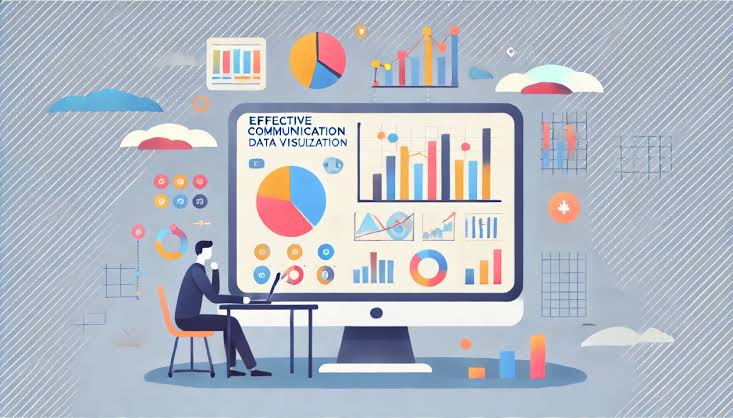
The Art Of Data Storytelling In Crafting Compelling Business Presentations
Enhance your business presentations with data storytelling. Learn how to use data visualisation and storytelling techniques for engaging, impactful presentations.
Table of Contents
- Transform Your Business Presentations with Data Storytelling
- Why Data Storytelling is Key in Business Presentations
- How Data Storytelling Makes Business Presentations More Engaging
- How to Integrate Data Storytelling in Your Presentations
- Key Benefits of Using Storytelling in Business Presentations
- Tips for Creating Effective Visuals in Presentations
- Conclusion: Transform Your Next Presentation with the Power of Data Storytelling
Transform Your Business Presentations With Data Storytelling

In today’s competitive business world, simply presenting facts and figures isn’t enough. To truly captivate your audience and convey your message effectively, data storytelling is the game changer. By combining data visualisation and narrative, you can transform raw data into a compelling story that resonates with your audience.
In this blog, we’ll dive into how data storytelling can enhance your business presentations, making them more engaging and impactful. By the end, you’ll understand how to use storytelling techniques to convey your data meaningfully and leave a lasting impression on your audience.
Why Data Storytelling Is Key In Business Presentations
Effective business presentations are more than just numbers and charts—they are about telling a story that captures attention and drives action. This is where data storytelling comes in. It blends data visualisation with narrative elements to make your presentation more engaging and persuasive.
When presenting complex data, it’s easy for the audience to become lost in numbers and graphs. Data storytelling simplifies this by presenting data within the context of a story, making it easier to digest and relate to. It creates an emotional connection that helps the audience understand the “why” behind the numbers, rather than just the “what.”
How Data Storytelling Makes Business Presentations More Engaging
- Makes data memorable: By weaving data into a story, you make it easier for your audience to remember key points.
- Enhances understanding: A narrative provides context, helping your audience see the bigger picture.
- Builds emotional connections: Storytelling helps connect your data to real-world experiences, making your message more relatable and powerful.
How To Integrate Data Storytelling In Your Presentations
Integrating data storytelling into your business presentations requires careful planning and the right techniques. Here’s a step-by-step guide to help you incorporate storytelling into your data-driven presentations:
1. Identify the Message
Before you start creating your presentation, identify the core message you want to convey. What is the takeaway from the data you’re presenting? By defining the story you want to tell, you can craft a narrative around your data.
2. Simplify Complex Data
Not all data is easily digestible. Use data visualization tools to transform complex data into simple, clear visuals. This could include charts, graphs, and infographics that highlight key trends, making it easier for your audience to grasp the main points.
3. Create a Narrative Arc
Just like any good story, your presentation should have a beginning, middle, and end. Start by introducing the problem or challenge (the data storytelling hook), show how your data leads to insights, and end with a solution or recommendation based on the findings.
4. Engage Your Audience
Storytelling is all about engagement. Use anecdotes, real-world examples, or hypothetical scenarios that relate to your audience’s interests and experiences. This helps to humanise the data, making it easier for your audience to relate.
Key Benefits Of Using Storytelling In Business Presentations
The benefits of data storytelling in business presentations are numerous. Here are just a few:
1. Boosts Audience Engagement
When you present data as part of a story, your audience is more likely to stay engaged throughout your presentation. Instead of passively absorbing information, they become active participants in your story, making it more memorable.
2. Improves Decision-Making
When data is presented within a clear narrative, it becomes easier for your audience to interpret the information and make informed decisions. This is especially valuable in business environments where quick, data-driven decisions are crucial.
3. Builds Trust
A well-crafted story makes complex data more transparent and understandable. This transparency builds trust with your audience, as they can see how your data leads to logical conclusions.
Tips For Creating Effective Visuals In Presentations
While data storytelling is a powerful tool, it’s important to present your data effectively. Here are some tips for using data visualisation in your presentations:
1. Keep It Simple
Avoid overloading your audience with too much data at once. Focus on a few key points and present them clearly using graphs, charts, or visuals that highlight those points.
2. Use Consistent Visuals
Make sure your visuals are consistent throughout the presentation. This means using the same color scheme, font, and design elements to make your slides visually appealing and easy to follow.
3. Highlight Key Insights
Use your data visuals to highlight key insights that support your story. Instead of showing raw numbers, focus on trends and patterns that can help your audience understand the bigger picture.
4. Tell a Story with Your Visuals
Every chart, graph, or image should tell a part of the overall story. Your visuals should guide the audience through your narrative, making the data easier to understand and remember.
Conclusion: Transform Your Next Presentation With The Power Of Data Storytelling
Incorporating data storytelling into your business presentations is a powerful way to engage your audience, improve understanding, and drive action. By blending data with narrative, you create presentations that resonate with your audience and make complex data easier to digest.
Remember, the key to successful data storytelling is to simplify the data, focus on the key message, and present it in a narrative form. Use data visualisation to enhance your story and keep your audience engaged from start to finish. With these strategies, your business presentations will be more effective and impactful, helping you communicate your message with clarity and confidence.
Ready to transform your presentations? Start using data storytelling today to make your next presentation unforgettable.





